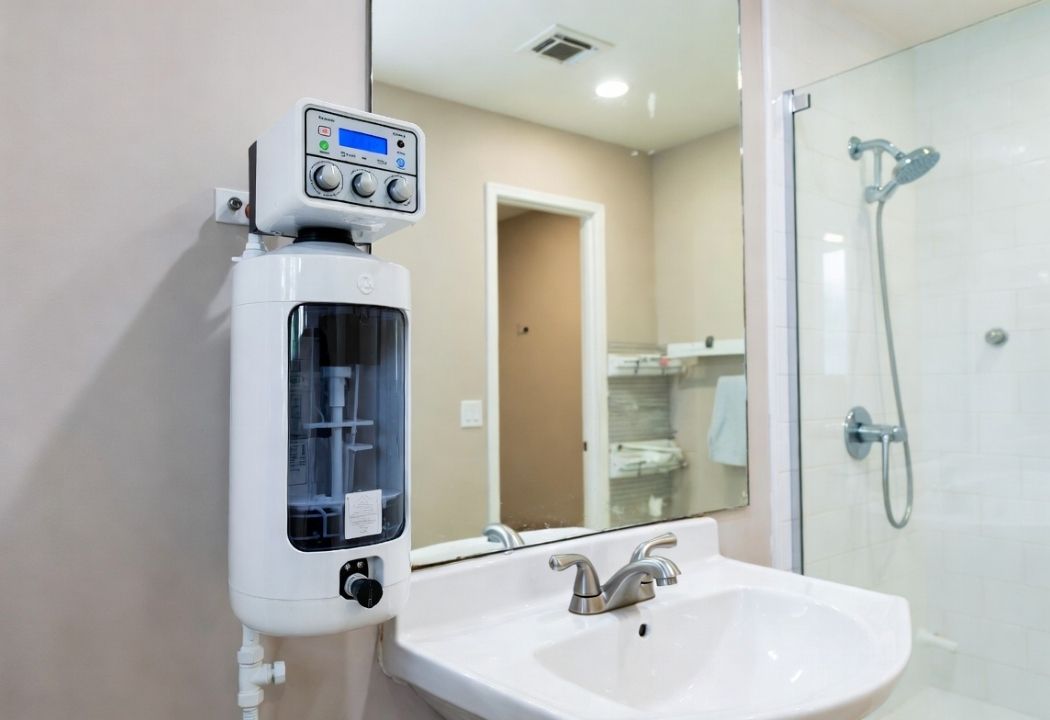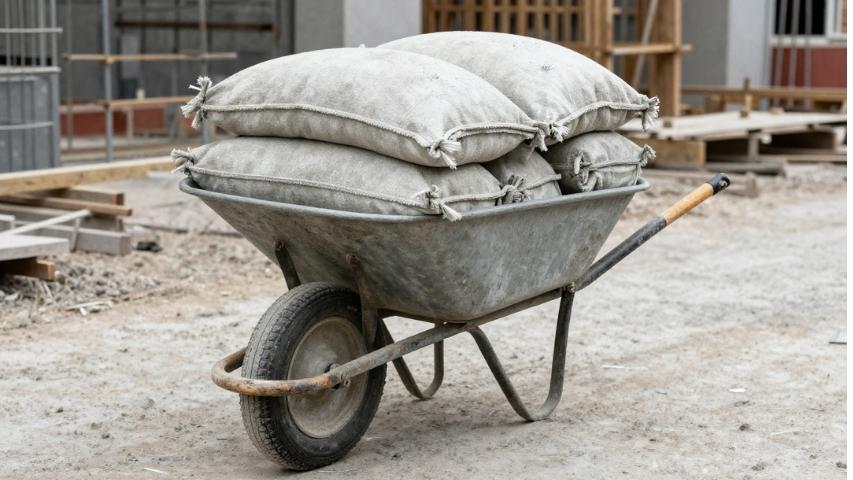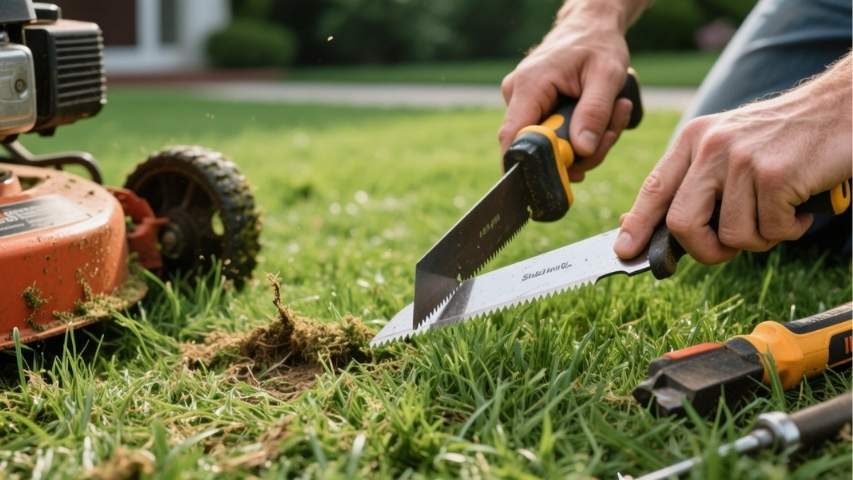Ageratum, often a floss flower, is a beloved choice among gardeners for its vibrant, fluffy blooms that brighten any border or garden bed. Native to Central America, these annual plants thrive in various settings and are prized for their ease of care and long blooming period. However, understanding its nutrient and water requirements is key to making your Ageratum flourish truly.
Whether you’re a plant enthusiast looking to refresh your knowledge or a horticulture student deep in the study of plant care, this guide will walk you through everything you need to know about keeping your Ageratum happy, healthy, and thriving.
Why Understanding Ageratum Needs Matter
Ageratum’s stunning lavender, blue, pink, or white flowers don’t bloom beautifully by accident. Providing optimal nutrients and watering ensures their prolonged health and lush blooms. Neglecting these needs can lead to weak, pale plants that fail to reach their full ornamental potential. By learning how to meet their specific requirements, you can enjoy a garden full of robust, colourful Ageratum year-round.
Ageratum’s Nutrient Needs

Understanding the Role of Soil in Ageratum’s Growth
Like every plant, Ageratum relies heavily on the type and quality of soil it’s planted in. Well-draining soil mixed with organic matter provides the foundation for a thriving Ageratum. The ideal soil pH for Ageratum is slightly acidic to neutral, ranging between 6.0 and 7.0. Testing your garden soil with an at-home kit or professional testing service ensures it meets these needs.
Key Nutrients for Ageratum
Ageratum plants are relatively undemanding, but providing them with balanced nutrients will enhance their growth and flowering. Here’s what they need most:
- Nitrogen (N) – Essential for leafy growth, nitrogen helps Ageratum establish lush green foliage. While important during the vegetative stage, too much nitrogen can lead to overgrowth at the expense of flowers. Moderation is crucial.
- Phosphorus (P) – Phosphorus is a powerhouse for root development and flowering. Phosphorus-rich fertilizers are vital as Ageratum transitions from its vegetative to blooming stage.
- Potassium (K) – Potassium contributes to overall plant health, improving disease resistance and enhancing the vibrancy of flowering. It also helps with water uptake and nutrient absorption.
- Micronutrients – Besides the three primary macronutrients, Ageratum also benefits from iron, manganese, and zinc. These elements are crucial in various plant functions, including photosynthesis and enzyme production.
- Fertilizer Application – When applying fertilizer to Ageratum, carefully following the instructions on the label is essential. Overfertilization can lead to burnt roots and foliage or stunted growth. It’s best to apply fertilizer when the soil is moist but not saturated.
- Organic vs. Synthetic Fertilizers – While organic and synthetic fertilizers can provide nutrients to plants, they differ in their composition and environmental effects. Organic fertilizers are made from natural materials such as compost or manure and release nutrients slowly over time. In contrast, synthetic fertilizers are chemically produced and have a faster release of nutrients. Organic fertilizers are generally considered more environmentally friendly as they do not contain harsh chemicals that can harm soil and water quality.
- Timing and Frequency – Ageratum should be fertilized regularly throughout the growing season. Fertiliser should be applied every two weeks for container-grown plants, while for garden-grown plants, once a month is sufficient.
Fertilizing Ageratum Plants
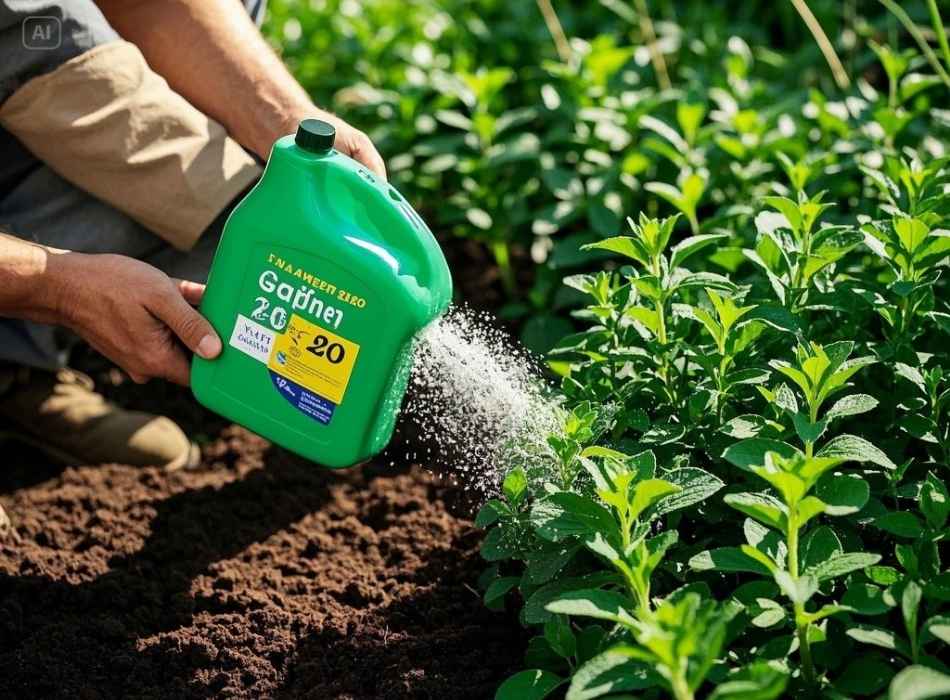
To supply these nutrients, choose a balanced, slow-release fertilizer labelled with an NPK ratio of 10-10-10 or 20-20-20. Here’s a simple step-by-step guide to fertilizing your Ageratum:
- Prepare the Soil: Incorporate compost or organic matter into your garden soil before planting Ageratum. This enriches the soil with nutrients and ensures adequate drainage.
- Initial Fertilization: About 2 to 4 weeks after planting, lightly apply fertilizer around the base of your plants, avoiding direct contact with the stems.
- Ongoing Feeding: Feed your Ageratum every 6 to 8 weeks during the growing season. Adjust the frequency if you notice signs of nutrient stress, such as yellowing leaves or stunted growth.
- Watering: Ageratum requires regular watering, especially during hot and dry weather. However, ensure you do not overwater, which can lead to root rot. Keep the soil consistently moist but not waterlogged.
- Pest and Disease Management: Ageratum is generally resistant to pests and diseases, but keep an eye out for common issues such as powdery mildew or aphids. Use organic pest control methods, such as manually removing insects or using natural sprays.
- Deadheading: Remove faded flowers by pinching them off at the base of the stem to promote continuous blooming. This will also help prevent the plant from going to seed too quickly.
- Pruning: Ageratum can benefit from light pruning throughout the growing season to promote bushier growth and more flowers. Pinch or trim off any leggy or damaged stems.
- Winter Care: Ageratum may continue to bloom until the first frost in areas with mild winters. In colder regions, treating Ageratum as an annual is best to replace it each year. If you wish to overwinter your plants, move them indoors before temperatures drop and provide them with bright, indirect light and moderate watering.
Organic Options for Feeding Ageratum
Organic gardening enthusiasts can use compost, well-rotted manure, or liquid seaweed as nutrient sources. These options supply essential nutrients and improve soil structure and health over time.
Water Requirements for Ageratum
Proper watering is just as crucial as providing nutrients. Water is critical in photosynthesis, nutrient transportation, and maintaining the plant’s turgidity. While Ageratum is a hardy species, overwatering or underwatering can lead to various problems.
How Much Water Does Ageratum Need?
Ageratum prefers moderately moist soil. On average, Ageratum needs about 1 inch of water per week from rainfall or supplemental watering. However, water requirements vary depending on climate, soil type, and plant age.
Tips for Watering Ageratum
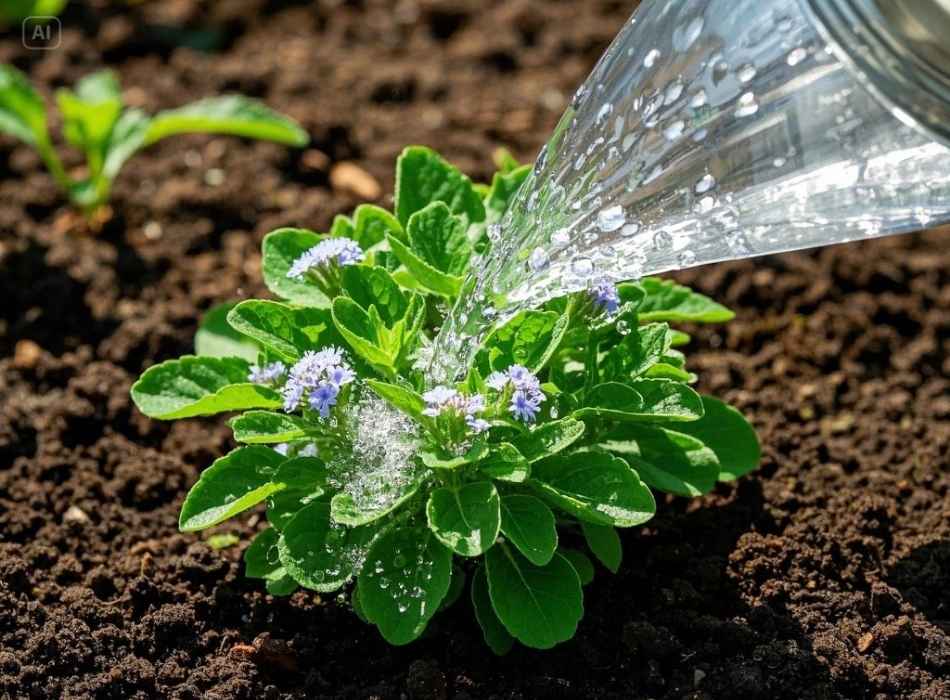
- Check Soil Moisture: Check the top 1 to 2 inches of soil before watering. If it feels dry, it’s time to water.
- Watering Frequency: During the hot summer months, you may need to water Ageratum every two to three days. Conversely, watering once a week might suffice in cooler or humid conditions.
- Deep Watering: Water deeply to encourage extensive root growth. Shallow, frequent watering leads to weak root systems.
- Avoid Wet Foliage: Water at the base of the plant rather than over the foliage to prevent fungal diseases such as powdery mildew. Wet foliage can also attract pests and cause rot.
- Mulching: Mulching around Ageratum plants helps retain soil moisture and suppress weed growth. Use organic materials such as shredded bark or straw, and spread a layer about two inches thick.
- Fertilizing: Ageratum doesn’t require heavy feeding, but a light application of balanced fertilizer once every four to six weeks can promote healthy growth.
- Deadheading: Remove spent flowers by pinching them off at the base to keep your Ageratum blooming throughout the season. This prevents the plant from putting energy into producing seeds and encourages it to continue producing new blooms.
- Pruning: Prune back leggy or overgrown Ageratum in early spring to encourage compact growth and more flowers. You can also prune any damaged or diseased stems throughout the growing season.
- Pest and Disease Control: Ageratum is relatively pest-free, but it may be susceptible to aphids, spider mites, and root rot if overwatered. If necessary, keep an eye out for these pests and diseases and treat them promptly with insecticidal soap or a fungicide.
- Overwintering: Ageratum may survive as a perennial in areas with mild winters and return in the following year. However, treating Ageratum as an annual is best for replanting it yearly in colder climates where frost occurs.
- Companion Planting: Ageratum is a great companion plant for vegetables such as tomatoes, peppers, and eggplants, as it attracts pollinators and repels pests. It also pairs well with other annuals like marigolds and petunias.
Signs of Overwatering and Underwatering
Understanding how your Ageratum responds to watering habits can save your plants from stress or damage. Watch out for these signs:
- Overwatering:
- Yellowing leaves
- Wilting, despite damp soil
- Root rot (soft, black roots when examined)
- Underwatering:
- Drooping foliage
- Crispy, dry leaves
- Soil pulling away from the edges of the pot or planting bed
Seasonal Considerations for Ageratum Care
Spring and Summer
During the growing season, Ageratum’s nutrient and water demands peak. Regular feeding and consistent watering will ensure vigorous plants and abundant blooms.
Fall
Reduce fertilizer application toward the end of the growing season to help Ageratum conserve energy. Continue watering as needed until the first frost.
Winter
If growing Ageratum in areas with frost, treat them as annuals and remove dead plants at the end of fall. Watering is reduced significantly during winter dormancy for perennial varieties in frost-free zones.
Bonus Tips for Thriving Ageratum
- Mulching: Adding a 2-inch layer of mulch around your Ageratum plants helps retain soil moisture, regulate soil temperature, and suppress weeds.
- Deadheading: Regularly remove spent flowers to promote continuous blooming and redirect energy into new growth.
- Companion Planting: Pair Ageratum with other sun-loving plants, such as marigolds or petunias, to create eye-catching colour contrasts in your garden.
- Fertilizing: Ageratum plants benefit from occasional fertilization with a balanced, all-purpose fertilizer during the growing season.
- Pest and Disease Control: Check for common pests like aphids and caterpillars and treat them promptly if necessary. Ageratum is generally disease-resistant but may be susceptible to fungal diseases in wet or humid conditions. Proper spacing and good air circulation can help prevent these issues.
- Overwintering: In areas with harsh winters, Ageratum may not survive outdoors. Consider digging up and potting your plants indoors before the first frost. Please place them in a sunny window or under grow lights and moisten the soil. You can also take stem cuttings in autumn and root them indoors to have new plants for the next season.
- Deadheading: Remove spent flowers by pinching or using scissors to encourage continuous blooming. This will also prevent seed production, which can cause your Ageratum to stop producing new blooms.
- Fertilization: Ageratum is a relatively light feeder and does not require much fertilization. However, you can use a balanced fertilizer once a month during the growing season to keep your plants healthy and blooming.
Make Your Garden Bloom with Healthy Ageratum
Caring for Ageratum may seem simple, but the right approach to nutrients and watering can make all the difference between a plant that merely survives and one that thrives. By paying attention to their soil, feeding, and hydration needs, you can enjoy fuller, more vibrant blooms all season.
Whether you’re cultivating Ageratum for the first time or looking to refine your skills, we hope this guide has you covered and has more questions about plant care.
We hope this guide has provided valuable insights into growing and caring for your plants. Remember, patience and consistency are key to achieving a thriving garden. With the proper care, your plants will reward you with their beauty and vibrancy. Gardening is not just about the results but also about enjoying the process and connecting with nature. Thank you for reading, and happy gardening!n vibrant with expert tips on fertilizing and watering!








